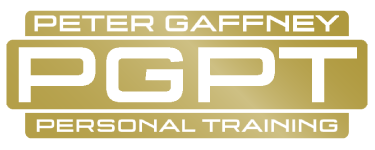Due to the recent circumstances and safety measures set to battle the covid-19 pandemic, gyms across the UK have been shut for what is now a long 4 months. But now they are reopening!
PGPT wanted to create a quick start guide for all the keen gym goers who have been forced to train using other means. This preparation could include bodyweight training at home, limited equipment circuit training, running outside or even plyometrics! Whatever your circumstances have been, we want to support you on your fitness journey into freedom!
This guide is to ensure an efficient and effective workout; A number of you may be feeling concerned at returning to a sweaty gym environment, therefore an effective session in less time may be a go to for most initially.
So what do you need to consider to get the most out of your session?
What exercises have YOU focused on during home training with limited equipment? The ‘go to’ exercises most will include are:
For your core: The old school classics, e.g. planks galore!
For cardio: Perhaps cycling and/or running
For Legs: Endurance and plyometric (jump) based training; Low weight and high repetitions.
For Upper body: Push exercise bias such as dips and press-ups
So, what have you neglected?
Now gyms are back open, it is important to program a training routine that is well rounded with an even physical ‘split’, working all of the muscle groups. This will help to avoid muscular imbalances that can lead to poor posture and injuries.
Strike a Balance
Many people tend to work on muscles that are already strong and skip the weak ones (or the ones you couldn’t find equipment, or have limited experience training for, like your back). Commonly, many people focus on exercises that build chest (pectoral) muscles, such as press ups or bench press, and thus have overdeveloped ‘pecs’. However, they tend to have relatively weak postural muscles; the muscles that attach to your shoulder blades and help keep the balance from a dominant chest.
People often do more exercises or daily activities that work the muscles in the front of the body, such as the quadriceps (when climbing stairs) or the biceps (when lifting heavy packages). It’s also normal to use the muscles more on your dominant side.
Evaluate your workout routine and choose exercises that will keep opposing muscle groups in balance. A well designed strength-training program should work all the major muscle groups.
Home workouts tend to favour push movements such as press ups, dips and overhead press whilst neglecting pulling movements such as rows, pulldowns and pull ups. It is also likely that with limited equipment, endurance and plyometric training has outweighed strength and hypertrophy training. So if your goal is to build strength or/and muscle, going back to the gym may require new exercise programming to assist future training progression.
In order to balance out any muscular imbalances as a result of home training bias, here are 6 exercises to consider:
Lat pulldowns (with a close reverse grip)
Lat pulldowns are effective at correcting the rounded-back, forward-head posture. They train our body to depress (bring down) and adduct (bring together) our shoulder blades. Over time, this will improve shoulder function and discourage the poor posture that comes from too much sitting. The reverse grip helps open the shoulder and retracts scapula.
Face-pulls
Face pulls are a great exercise for the rear deltoids, trapezius, and upper back muscles. Exercising the rear ‘delts’ will prevent muscular imbalance that can contribute to shoulder pain and injuries, not to mention a ‘hunched forward’ appearance and poor posture. Plus they help build overall shoulder strength.

Single leg work
Such as:
- Bulgarian split squats
- Single leg hip bridges
- Split squats…
These are compound exercises that contribute to strong glutes, which are the cornerstone of hip and pelvic stability. Strong glutes also fend off the likelihood of chronic lower back pain and dysfunction.
Swimming and/or Rowing instead of running and/or cycling
Swimming is an excellent low impact workout. The buoyancy of the water will allow you to build endurance, muscular strength and cardiovascular fitness without putting pressure on your joints.
Rowing is low impact and compared to other forms of cardio, provides a greater range of muscle work. It hits just about everything in the upper body and lower body, as well as the core.
Plank variations instead of crunches/ sit ups
- Floor plank
- TRX plank
- Plank toe taps or dynamic plank
The abdominal muscles connect our rib cage to our pelvis, keeping our spine healthy and our midsection strong enough to carry us through the day. Strengthening your core can help improve your posture and better prepare you to tackle all kinds of everyday tasks.
According to Harvard Medical School, when doing crunches a lot of people perform the movement too rapidly and cheat their way into and out of the move by using their hip flexors to help.This technique tilts the pelvis anteriorly, increasing the stress on the low back.
So if you are using the gym without the supervision of a personal trainer, maybe try a plank variation instead.
Remember, when planning your new gym routine it is important to remember that a well-designed strength-training program should work all the major muscle groups!
Happy lifting!


